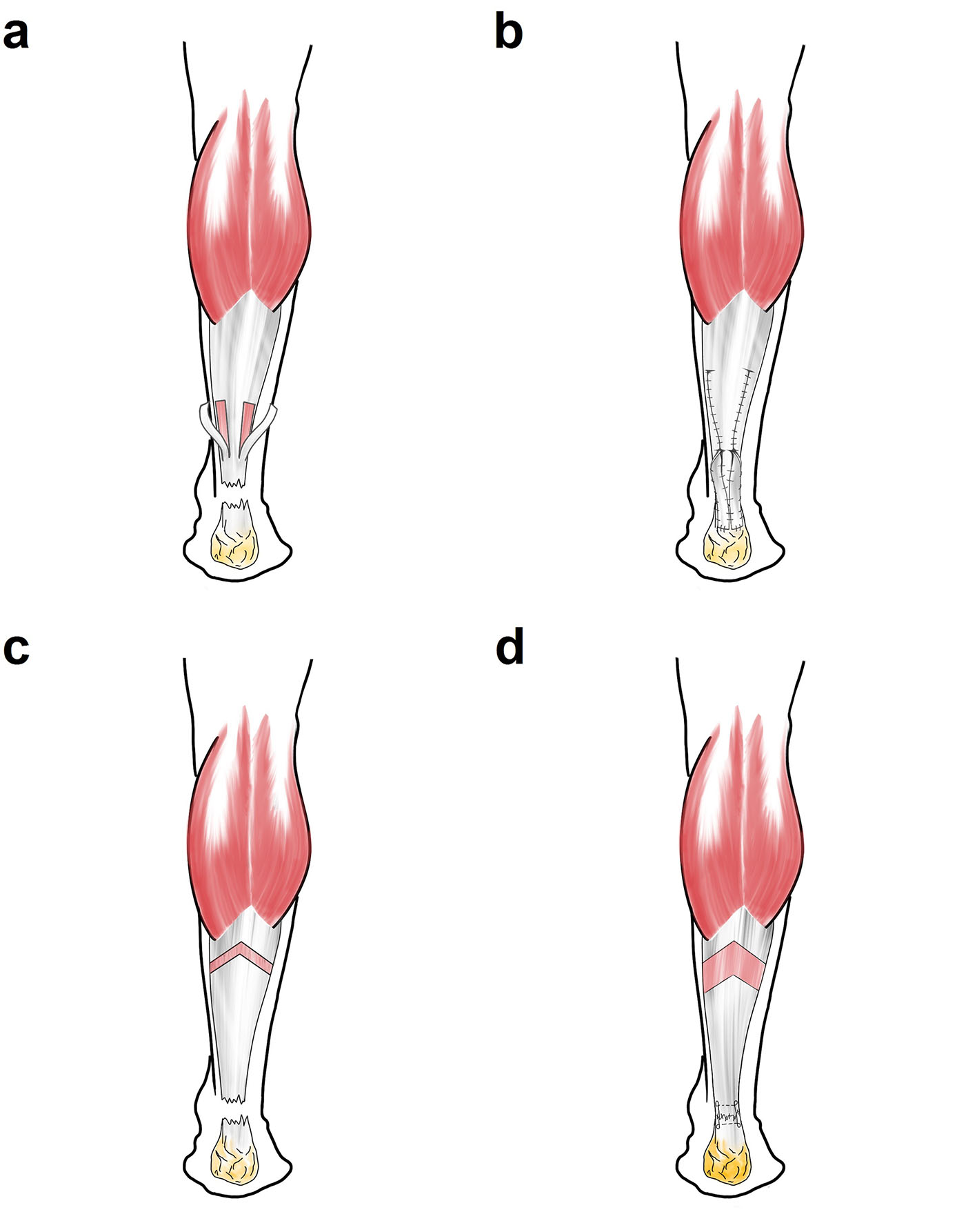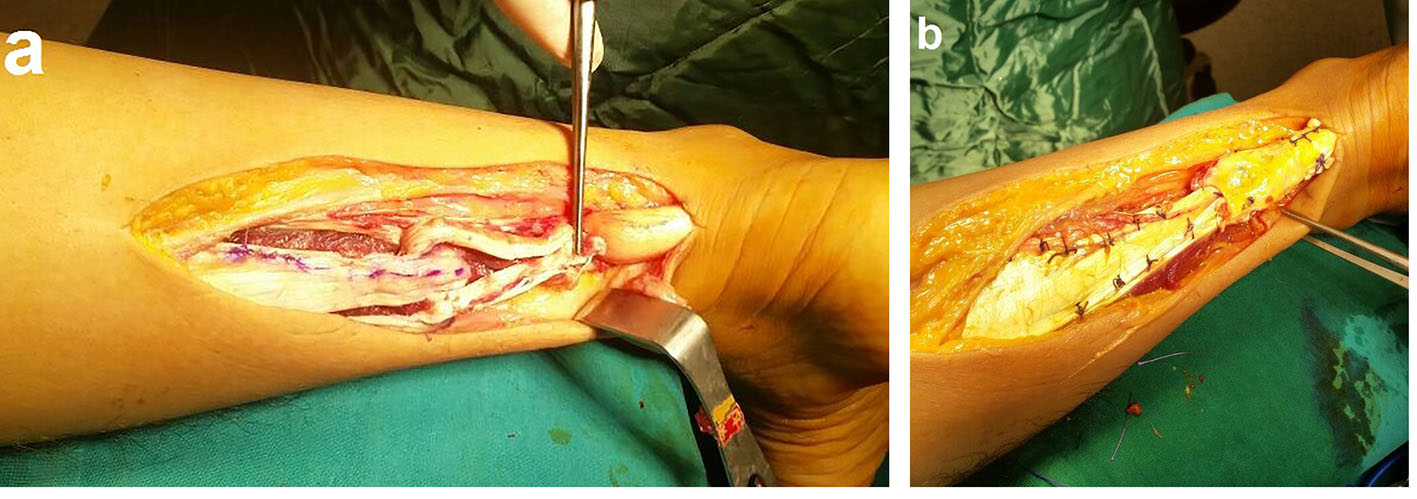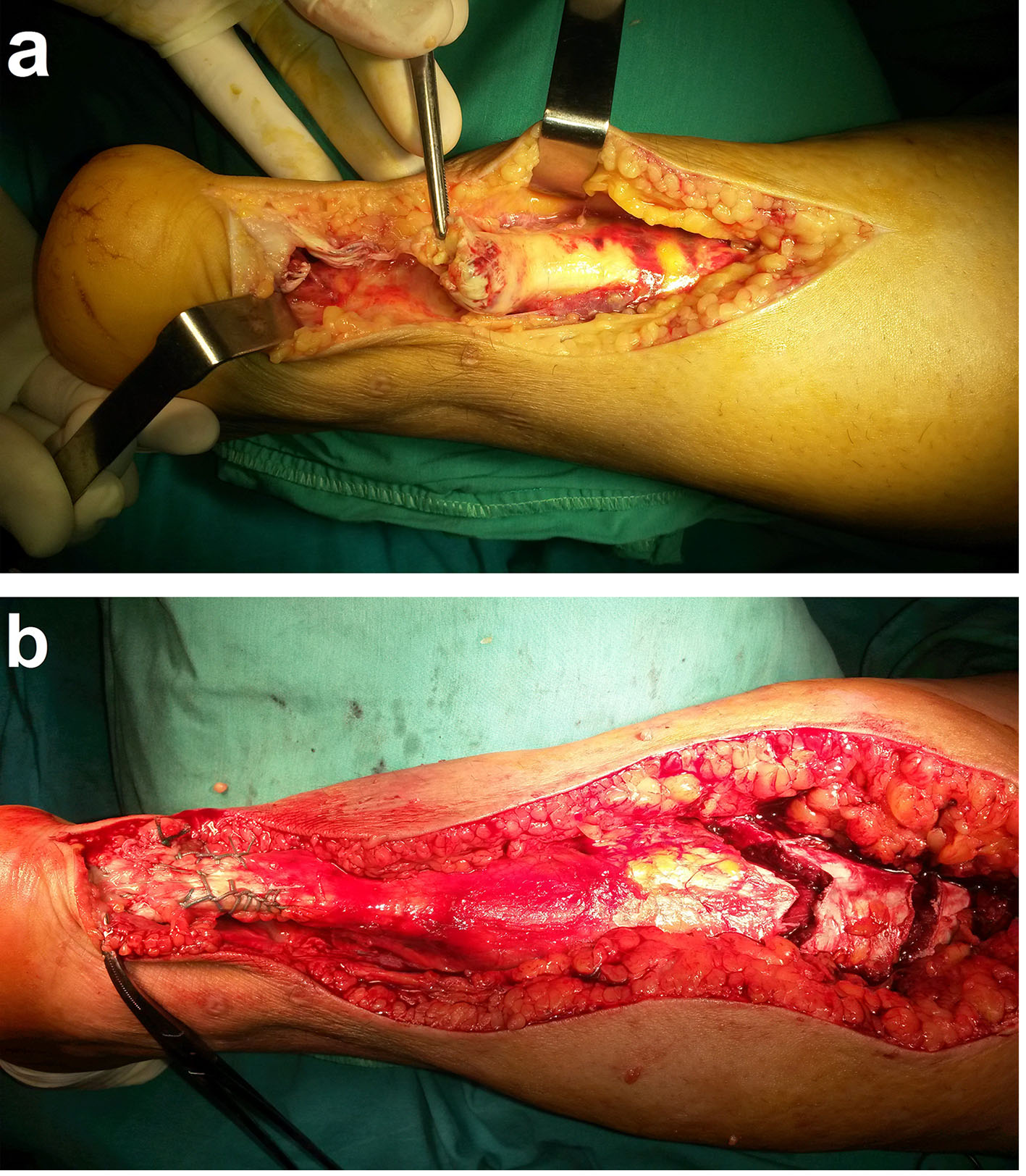
Figure 1. Schematic illustration of the Lindholm technique (a, b) and primary repair with Vulpius’ lengthening of the gastrocnemius (c, d).
| Journal of Clinical Medicine Research, ISSN 1918-3003 print, 1918-3011 online, Open Access |
| Article copyright, the authors; Journal compilation copyright, J Clin Med Res and Elmer Press Inc |
| Journal website http://www.jocmr.org |
Original Article
Volume 9, Number 7, July 2017, pages 573-578
Chronic Achilles Tendon Rupture Reconstruction Using the Lindholm Method and the Vulpius Method
Figures



Tables
| Patients | Sex | Age | Side | Gap (cm) | Cause of injury | Time between injury and surgery (day) | Follow-up (months) | Immobilized (week) | Surgical technique |
|---|---|---|---|---|---|---|---|---|---|
| 1 | M | 28 | L | 6 | Football | 40 | 12 | 3 | Primary repair + Vulpius |
| 2 | M | 39 | R | 3 | Football | 30 | 18 | 4 | Primary repair + Vulpius |
| 3 | M | 38 | R | 4 | Football | 30 | 14 | 5 | Primary repair + Vulpius |
| 4 | M | 28 | R | 4 | Football | 45 | 15 | 5 | Primary repair + Vulpius |
| 5 | M | 42 | L | 3 | Football | 35 | 21 | 5 | Primary repair + Vulpius |
| 6 | F | 36 | R | 4 | Fall | 50 | 24 | 4 | Primary repair + Vulpius |
| 7 | M | 39 | L | 3 | Football | 35 | 20 | 4 | Primary repair + Vulpius |
| 8 | M | 32 | L | 4 | Football | 60 | 24 | 3 | Lindholm |
| 9 | M | 39 | R | 4 | Football | 45 | 18 | 5 | Lindholm |
| 10 | M | 41 | R | 4 | Football | 60 | 17 | 5 | Lindholm |
| 11 | M | 32 | R | 5 | Fall | 60 | 13 | 6 | Lindholm |
| 12 | M | 40 | R | 3 | Football | 45 | 12 | 3 | Lindholm |
| 13 | M | 34 | R | 5 | Football | 30 | 24 | 4 | Lindholm |
| 14 | F | 22 | L | 4 | Fall | 30 | 24 | 3 | Lindholm |
| 15 | M | 38 | R | 4 | Football | 35 | 38 | 3 | Lindholm |
| Excellent | Satisfactory | Poor |
|---|---|---|
| None of patients had symptoms | Patients were free from symptoms but there was weakness of the calf detected or excessive passive dorsiflexion of the ankle. | In addition to the findings of satisfactory, the patients experienced symptoms either of weakness of the ankle or foot or of a limp or pain. |
| Patients | Returned to pre-injury daily activities (months) | Stand on tiptoe | Plantar flexion (°) | Dorsiflexion (°) | Calf atrophy (cm) | Satisfaction (Hooker classification) | Complication |
|---|---|---|---|---|---|---|---|
| 1 | 2 | Normal | 40 | 15 | 0 | Excellent | No |
| 2 | 2 | Normal | 45 | 20 | 0 | Excellent | No |
| 3 | 2 | Normal | 32 | 25 | 2 | Excellent | No |
| 4 | 5 | Normal | 35 | 24 | 2 | Excellent | No |
| 5 | 5 | Normal | 28 | 25 | 2.5 | Excellent | No |
| 6 | 4 | Normal | 30 | 15 | 1 | Satisfactory | No |
| 7 | 4 | Normal | 35 | 20 | 0 | Excellent | No |
| 8 | 3 | Normal | 40 | 20 | 0 | Excellent | No |
| 9 | 3 | Normal | 40 | 20 | 1 | Excellent | No |
| 10 | 3.5 | Normal | 40 | 15 | 2 | Excellent | No |
| 11 | 3.5 | Normal | 35 | 15 | 2 | Satisfactory | No |
| 12 | 4 | Normal | 40 | 15 | 2 | Satisfactory | No |
| 13 | 3 | Normal | 40 | 15 | 1 | Excellent | No |
| 14 | 2 | Normal | 45 | 20 | 1 | Satisfactory | No |
| 15 | 3 | Normal | 40 | 15 | 2 | Excellent | No |